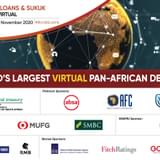 Background
Background
In April 2016, the Banque Ouest Africain de Développement (BOAD) sought to raise around US$500mn in its debut hard currency capital markets transaction, with the proceeds of the issuance going towards general corporate purposes.
BOAD was able to price its debut trade at the tight end of guidance and upsize the transaction, making it one of the largest US dollar denominated issuances from any West African development finance institution.
Transaction Breakdown
A roadshow was initially conducted in London, New York and Boston in January 2016, but the decision to proceed with a deal was postponed due to extremely volatile market conditions.
On 27 April 2016, the transaction was re-announced to the market by way of two global investor teleconferences. The bank initially announced a US dollar denominated 5-year transaction expected to be about US$500m in size.
The book building process began on 28 April and generated strong momentum from the outset; by the time US markets opened, the lead managers were able to release formal price guidance to the market for a US dollar benchmark-sized transaction at “5.875% area”.
Within one hour of the US market opening, the strength of investor demand allowed the lead managers to further revise price guidance downwards and set the yield at 5.75%, an impressive 25bp compression in spread from initial price thoughts.
When books were closed at 2.30pm London time, demand stood at roughly US$1.bn, enabling BOAD to print an upsized US$750m transaction, a significant increase over the originally targeted size. The deal printed with a 5.5% coupon at a reoffer price of 98.927% and one of the largest ever US dollar denominated Eurobond issuances by any African financial institution.
The bond racked up a fairly well diversified book. About 44% of the notes were allocated to accounts based in the US, 27% to accounts in Europe, 18% to accounts in the UK, 9% to accounts in China, and 2% elsewhere. About 70% of the notes were picked up by fund managers, 11% retail banks, 10% hedge funds and 9% central banks, pension funds and insurers.
It was the first Eurobond issued by a development bank in West Francophone Africa and could help lead the way for many other West Francophone Africa issuers.









